Noise Cancellation for HIPERLAN/2 with Open Loop Transmit Diversity Technique
Abstract
:1. Introduction
2. Alamouti Technique
3. HIPERLAN/2 System
4. HIPERLAN/2 with Open Loop Transmit Diversity Technique
5. Results
6. Conclusions
Author Contributions
Funding
Acknowledgments
Conflicts of Interest
References
- Paulraj, A.; Rohit, A.P.; Nabar, R.; Gore, D. Introduction to Space-Time Wireless Communications; Cambridge University Press: Cambridge, UK, 2003. [Google Scholar]
- Jafarkhani, H. Space-Time Coding: Theory and Practice; Cambridge University Press: Cambridge, UK, 2005. [Google Scholar]
- Abdulkhaleq, A.M.; Yahya, M.A.; McEwan, N.; Rayit, A.; Abd-Alhameed, R.A.; Ojaroudi Parchin, N.; Al-Yasir, I.Y.; Noras, J. Recent Developments of Dual-Band Doherty Power Amplifiers for Upcoming Mobile Communications Systems. Electronics 2019, 8, 638. [Google Scholar] [CrossRef]
- Larsson, E.G.; Stoica, P. Space-Time Block Coding for Wireless Communications; Cambridge University Press: Cambridge, UK, 2008. [Google Scholar]
- Wireless World; I.P.C. Business Press Limited: London, UK, 1974.
- Jasim, A.A.; Younus, K.M.; Ali, A.; Sayidmarie, K.H.; Alhaddad, A.; Abd-Alhameed, R.A. A simple self-interference cancellation technique for full duplex communication. In Proceedings of the 2017 Internet Technologies and Applications (ITA), Wrexham, UK, 12–15 September 2017; pp. 224–229. [Google Scholar]
- Nejdi, I.H.; Rhazi, Y.; Lafkih, M.A.; Bri, S. Designing Multiband Multilayered Microstrip Antenna for UMTS, ISM, Communication Satellite, HiperLAN and C-Band. In Proceedings of the 2018 International Symposium on Advanced Electrical and Communication Technologies (ISAECT), Kenitra, Morocco, 21–23 November 2018; pp. 1–8. [Google Scholar]
- Alam, M.S.; Yeh, K.M.; Islam, M.T.; Misran, N.; Hasbi, A.M. An EBG microstrip antenna for 5.4 GHz WLAN/HIPERLAN applications. In Proceedings of the 2012 IEEE Student Conference on Research and Development (SCOReD), Pulau Pinang, Malaysia, 5–6 December 2012; pp. 144–147. [Google Scholar]
- Gupta, A.; Tripathy, M.R.; Choudhary, V.; Ronnow, D. A compact four-element MIMO antenna for WLAN/WiMAX and HiperLAN applications. In Proceedings of the 2016 IEEE Annual India Conference (INDICON), Bangalore, India, 16–18 December 2016; pp. 1–4. [Google Scholar]
- Asokan, H.; Gopalakrishnan, S. A Miniaturized inductive—Loaded narrow strip wide band-notched ultra-wideband monopole antenna with dual-mode resonator. AEU Int. J. Electron. Commun. 2018, 86, 125–132. [Google Scholar] [CrossRef]
- Zid, M.B. Recent Trends in Multi-user MIMO Communications; IntechOpen: London, UK, 2013. [Google Scholar]
- Abdulkhaleq, A.M.; Ali, N.T.; Abd-Alhameed, R.A.; Sayidmarie, K.H.; See, C.H.; Noras, J.M.; Excell, P.S. Noise cancellation for compact MIMO systems. In Proceedings of the 5th International Conference on Internet Technologies and Applications, Wrexham, UK, 10–13 September 2013. [Google Scholar]
- Wireless Communications; Tata McGraw-Hill Education: New York, NY, USA, 2005.
- Esli, C.; Ozgul, B.; Delic, H. Space-frequency coded HIPERLAN/2. IEEE Trans. Consum. Electron. 2004, 50, 1162–1168. [Google Scholar] [CrossRef]
- Esli, C.; Ay, G.; Ozgul, B.; Delic, H. Space-frequency coding for the HIPERLAN/2 standard. In Proceedings of the 12th IEEE Mediterranean Electrotechnical Conference (IEEE Cat. No.04CH37521), Dubrovnik, Croatia, 12–15 May 2004; Volume 442, pp. 445–448. [Google Scholar]
- Moubadir, M.; Badaoui, I.; Touhami, N.A.; Aghoutane, M.; Ouahabi, M.E. A new circular polarization dual feed microstrip square patch antenna using branch coupler feeds for WLAN/HIPERLAN applications. Procedia Manuf. 2019, 32, 702–709. [Google Scholar] [CrossRef]
- Kruys, J. HIPERLAN, applications and requirements. In Proceedings of the [1992 Proceedings] Third IEEE International Symposium on Personal, Indoor and Mobile Radio Communications, Boston, MA, USA, 19–21 October 1992; pp. 133–138. [Google Scholar]
- Giordano, A.A.; Levesque, A.H. Modeling of Digital Communication Systems Using SIMULINK; Wiley: Hoboken, NJ, USA, 2015. [Google Scholar]
- Rao, K.D. Channel Coding Techniques for Wireless Communications; Springer India: Berlin, Germany, 2015. [Google Scholar]
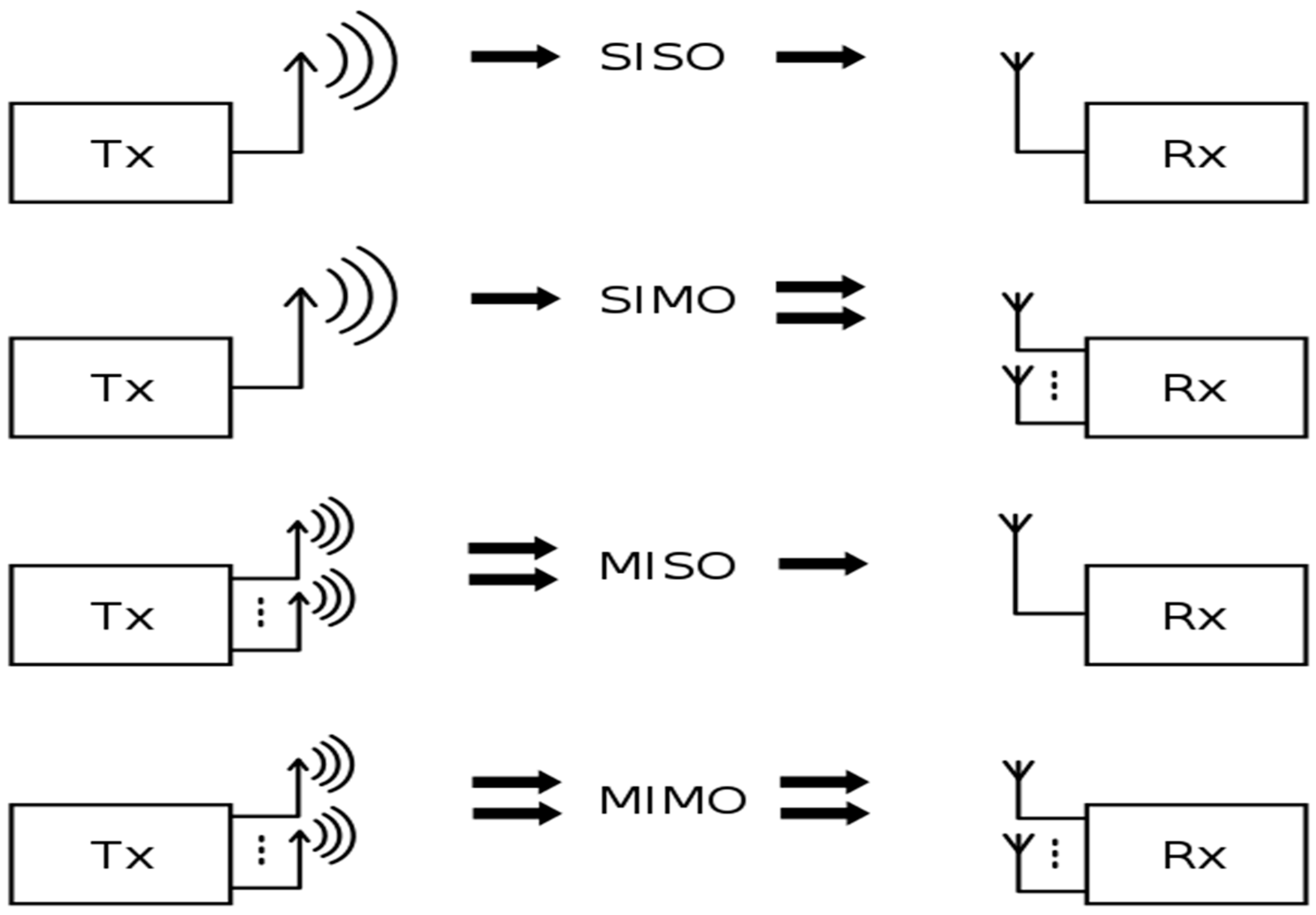
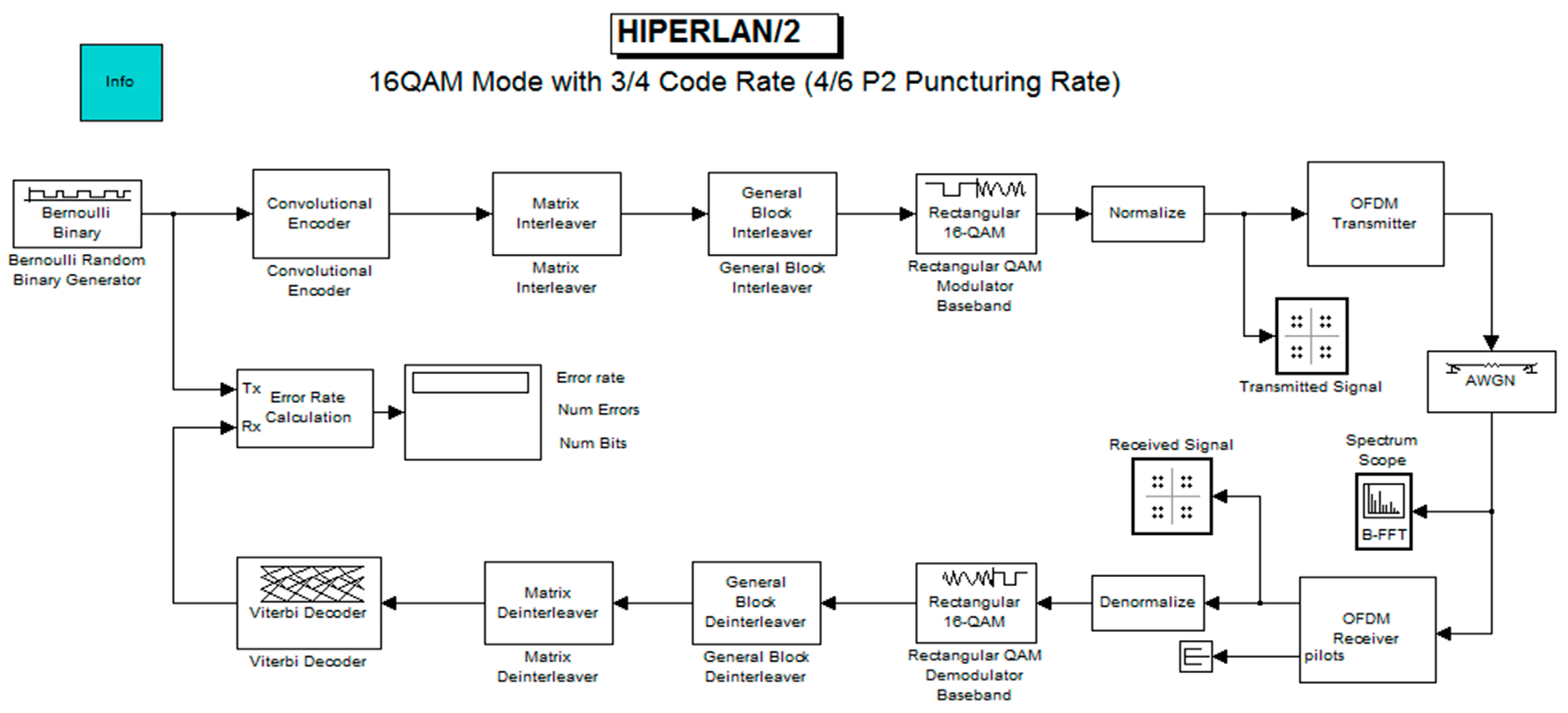

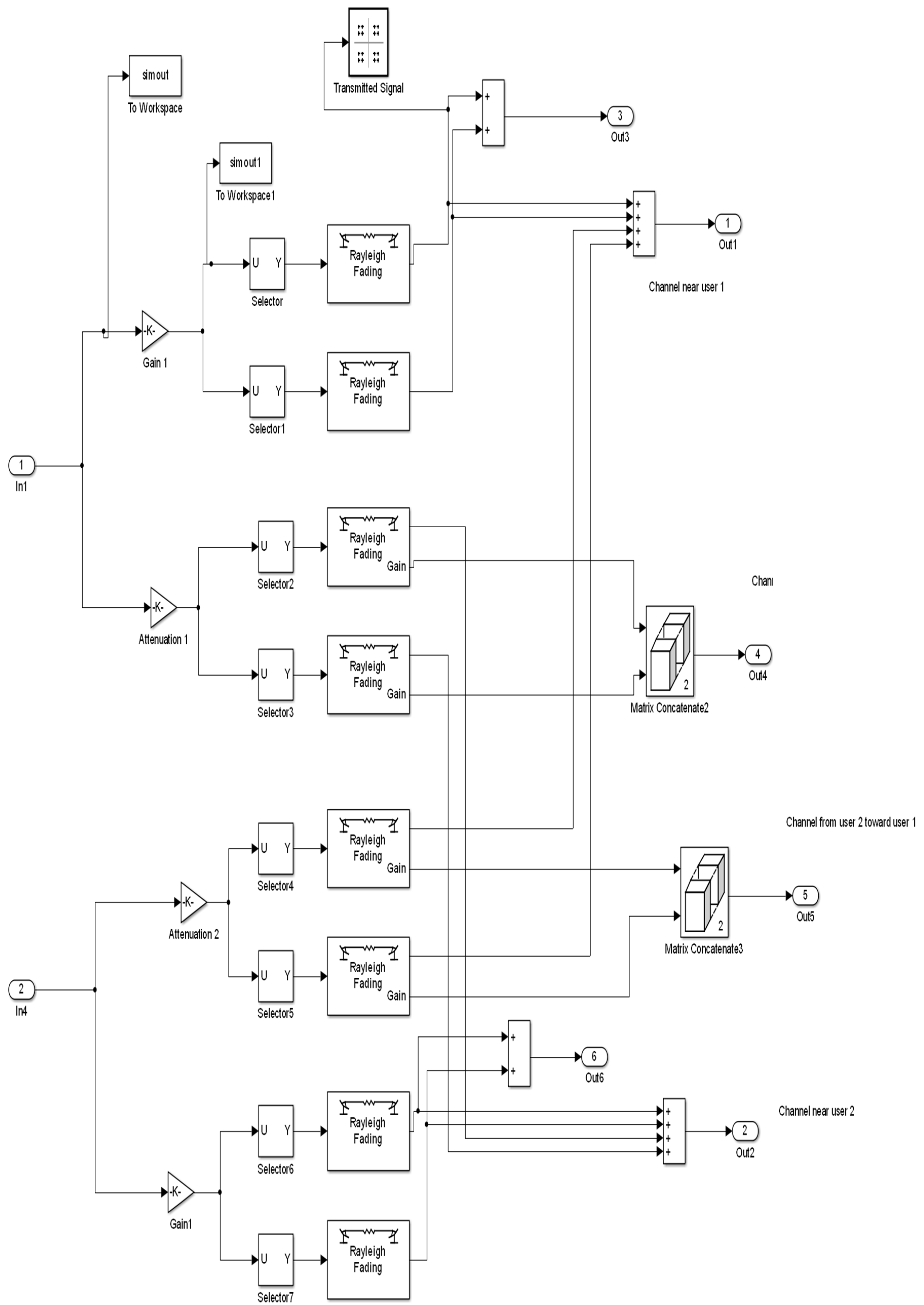
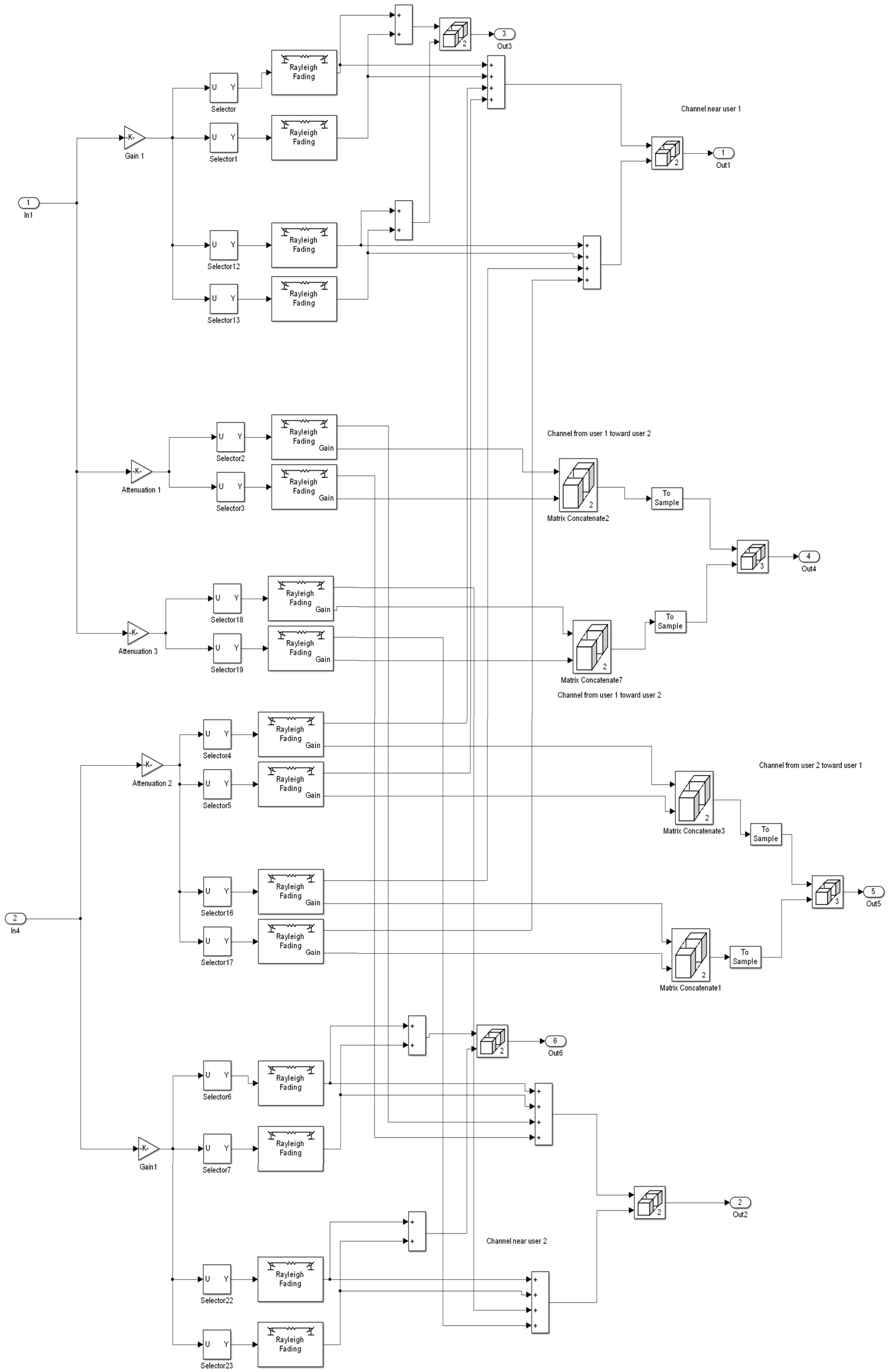
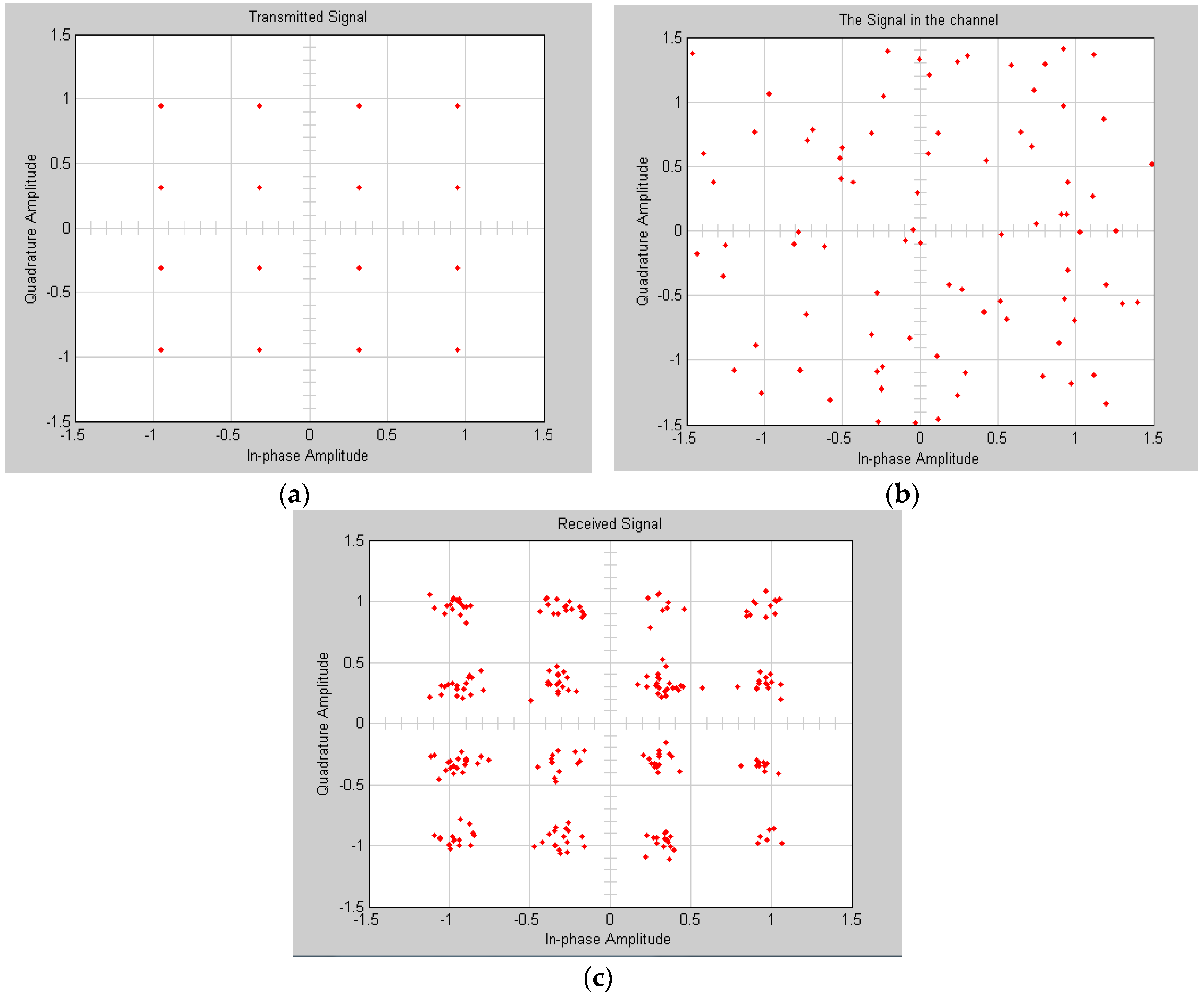


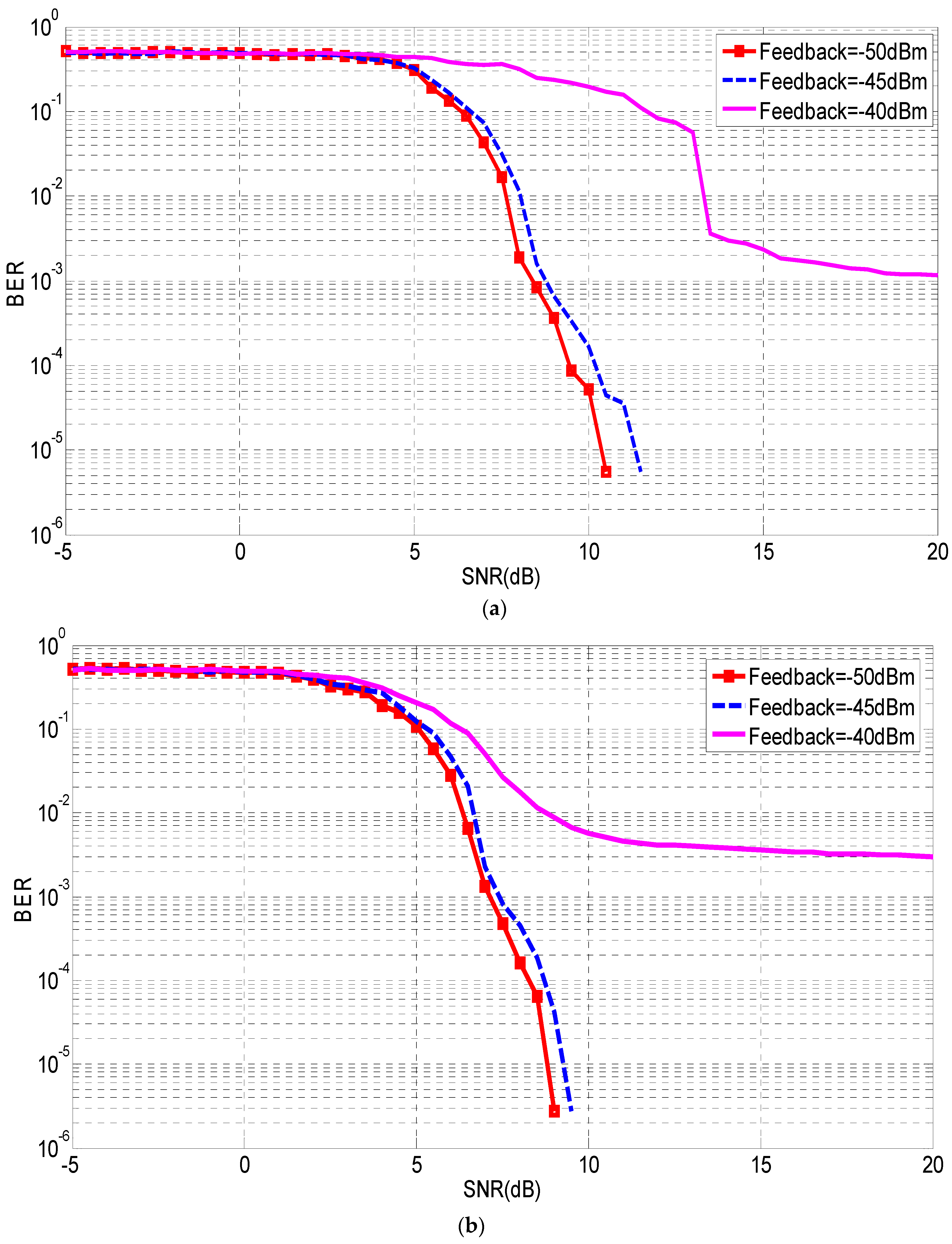
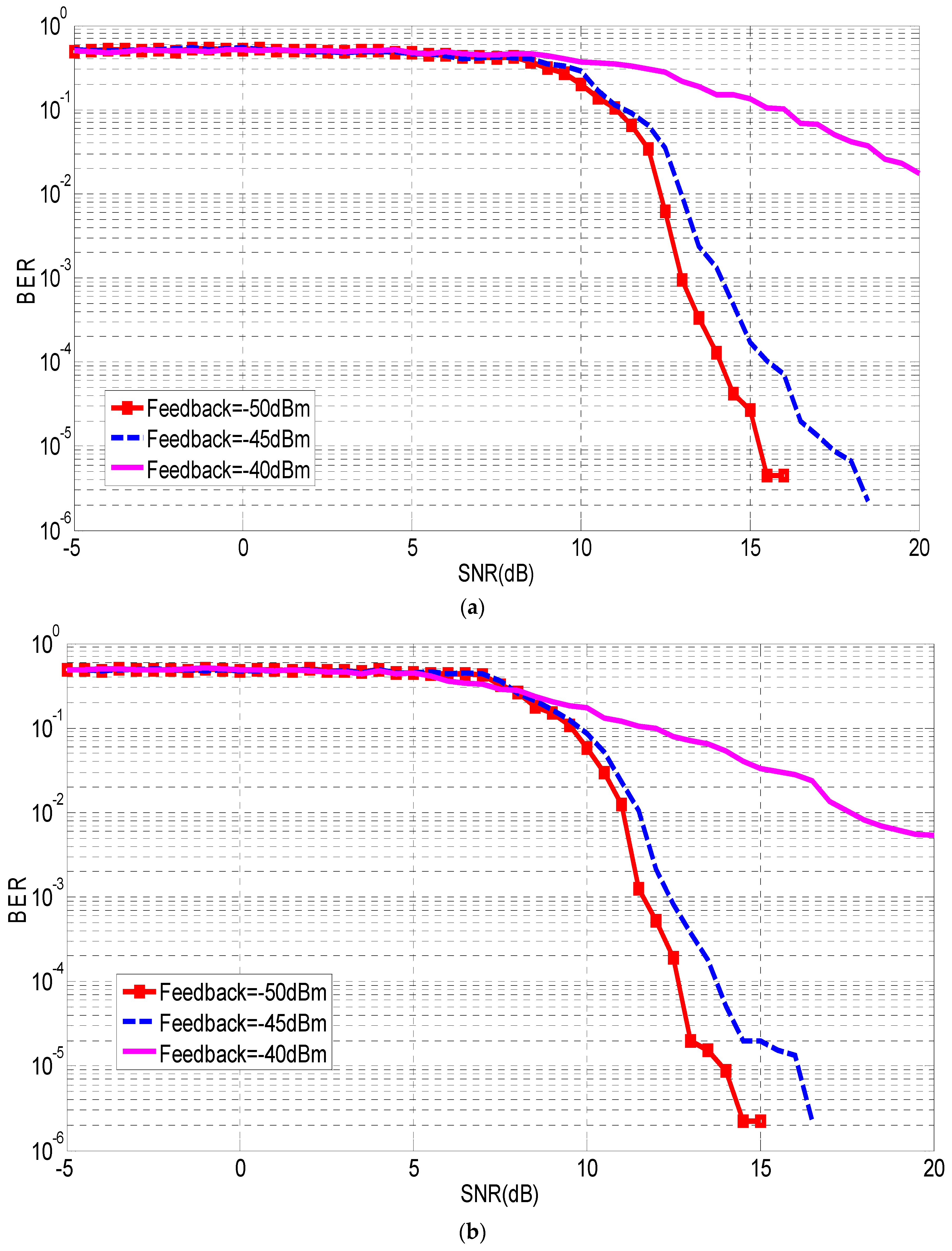
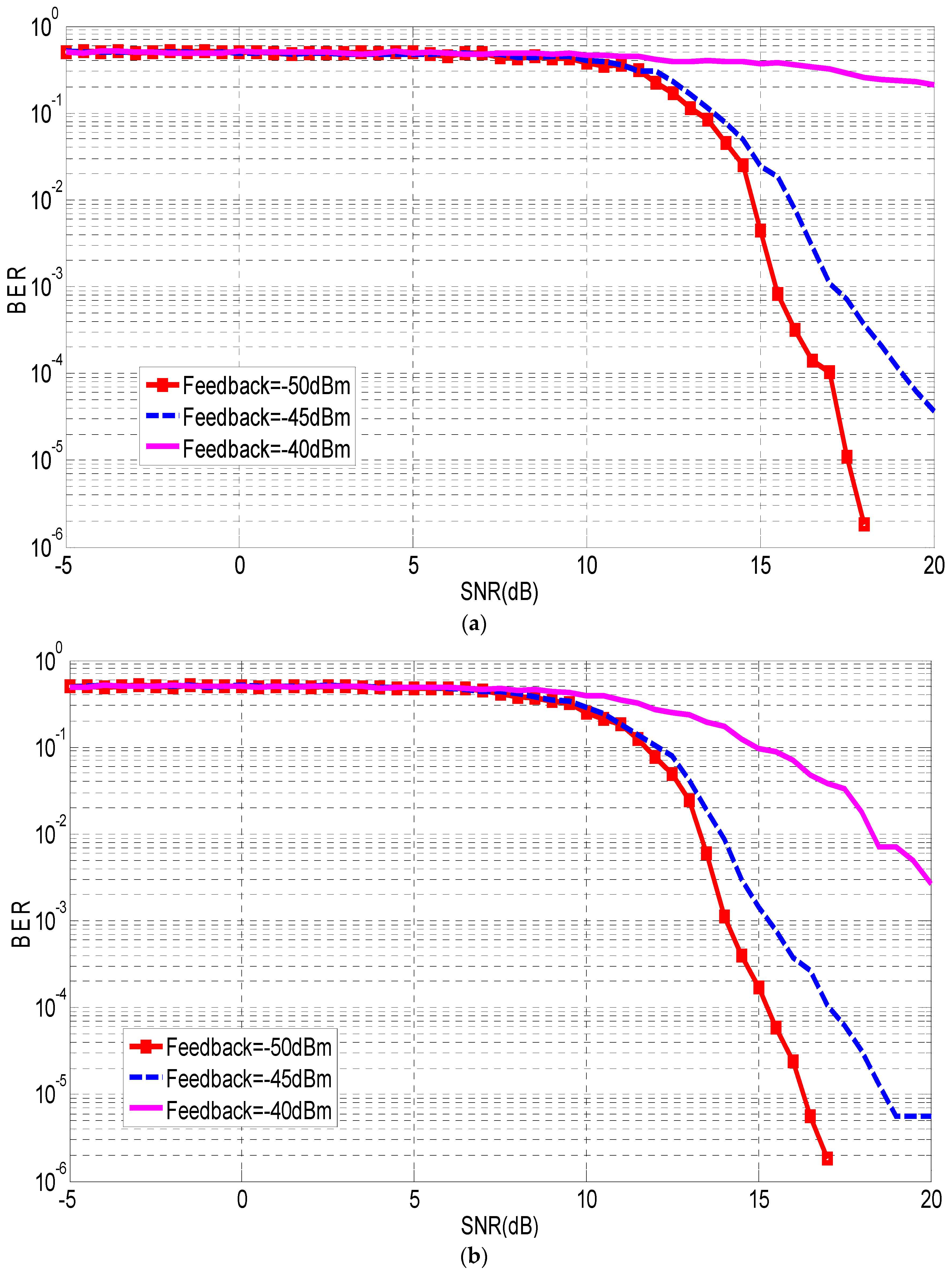

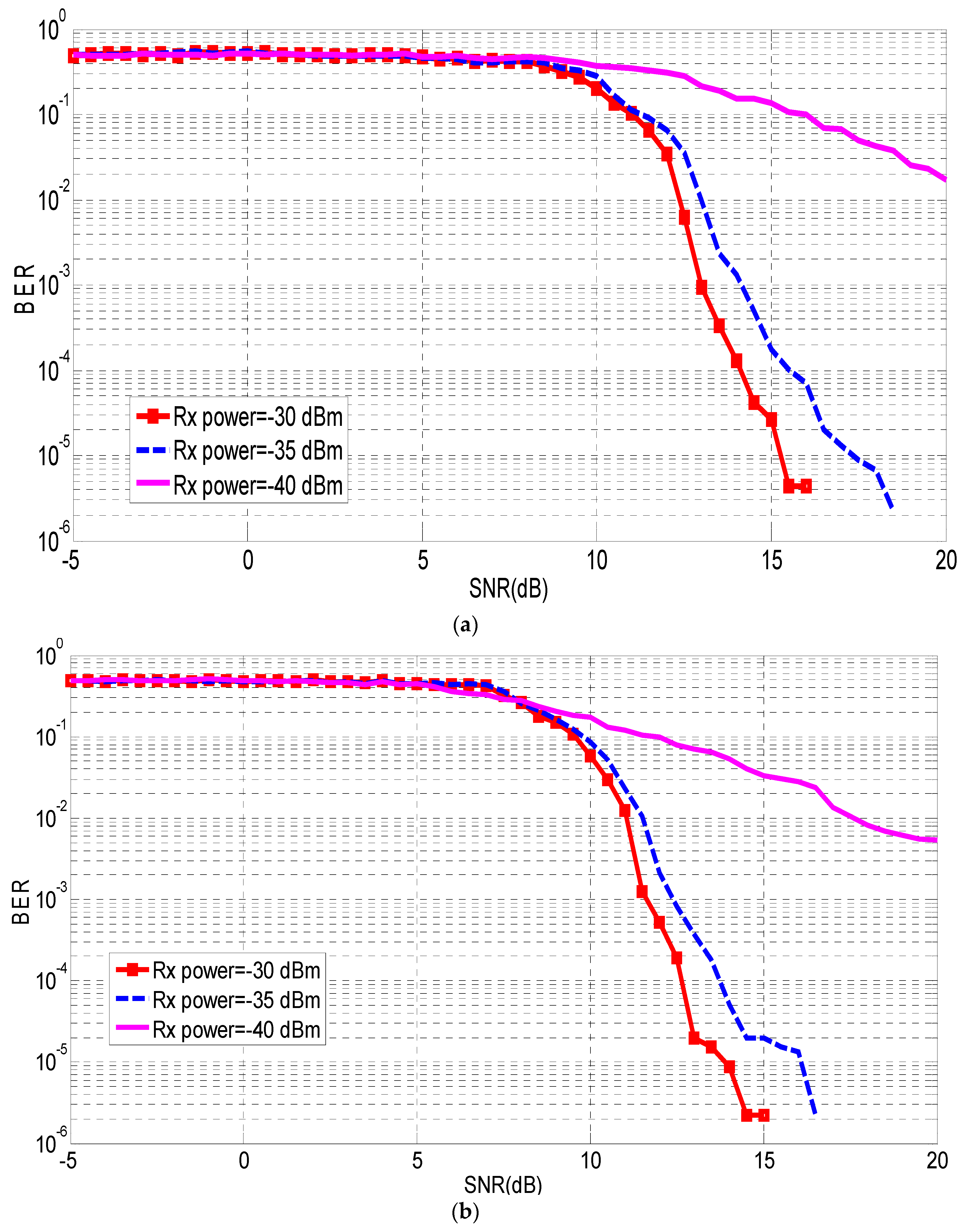
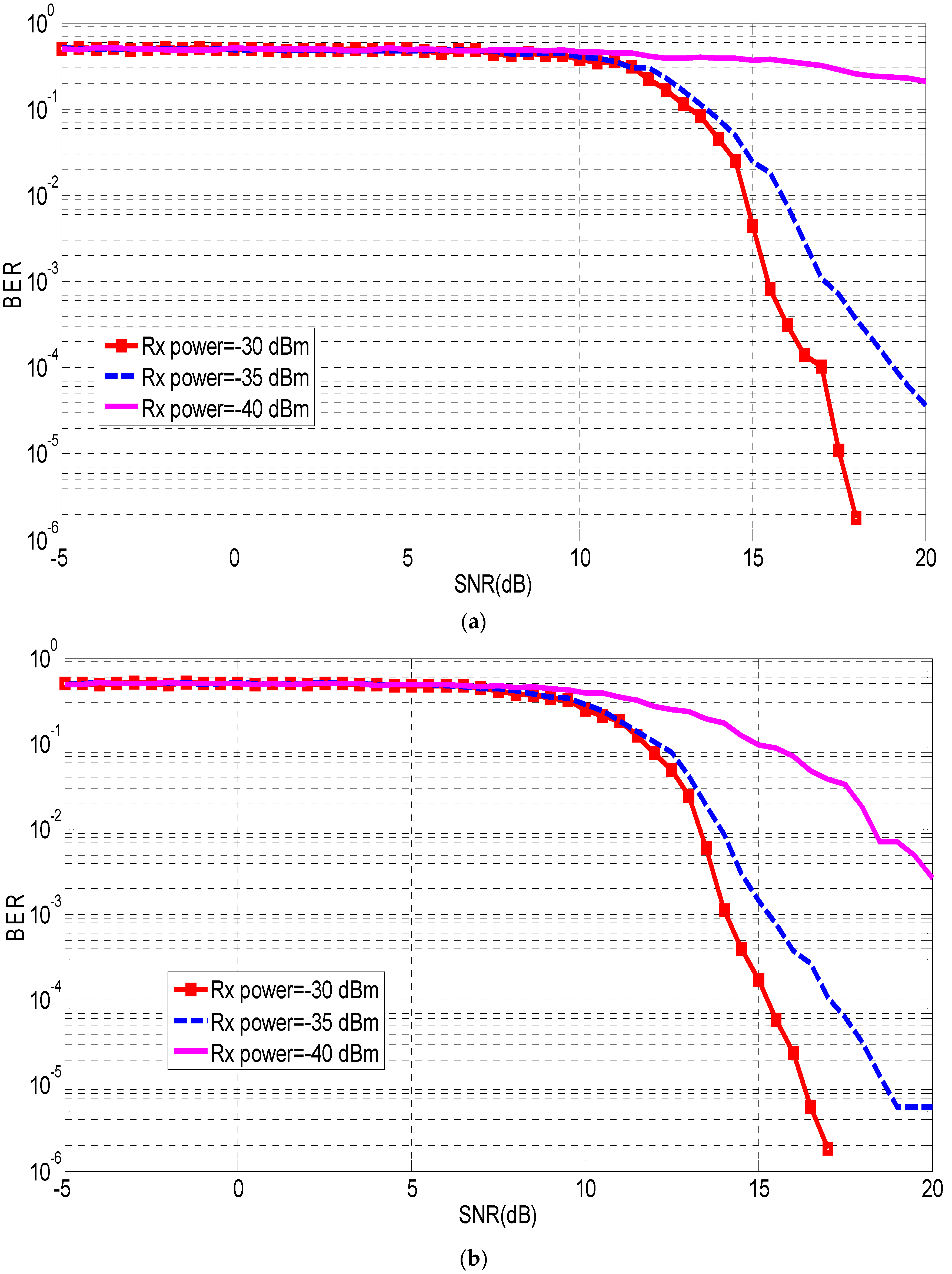
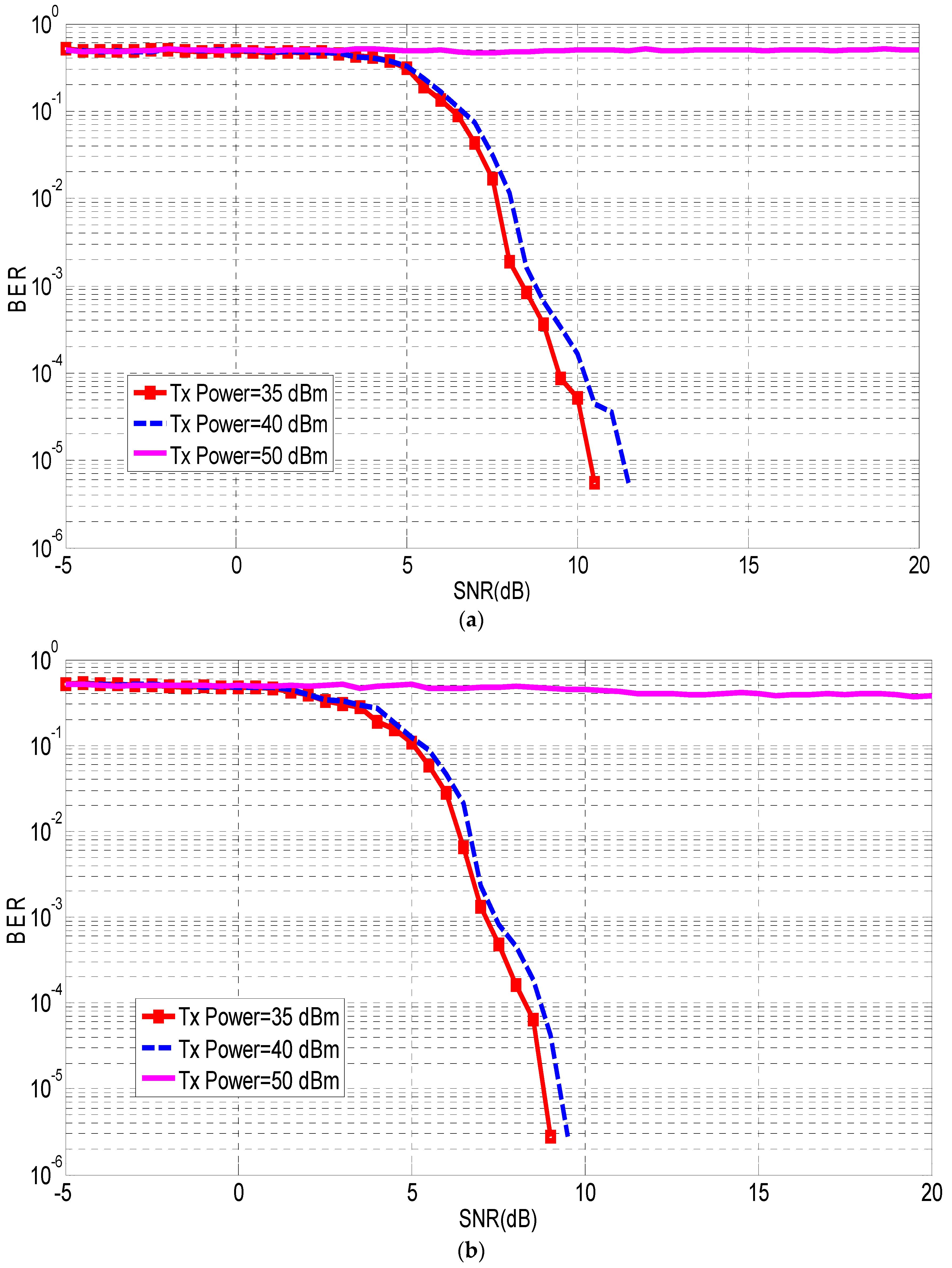
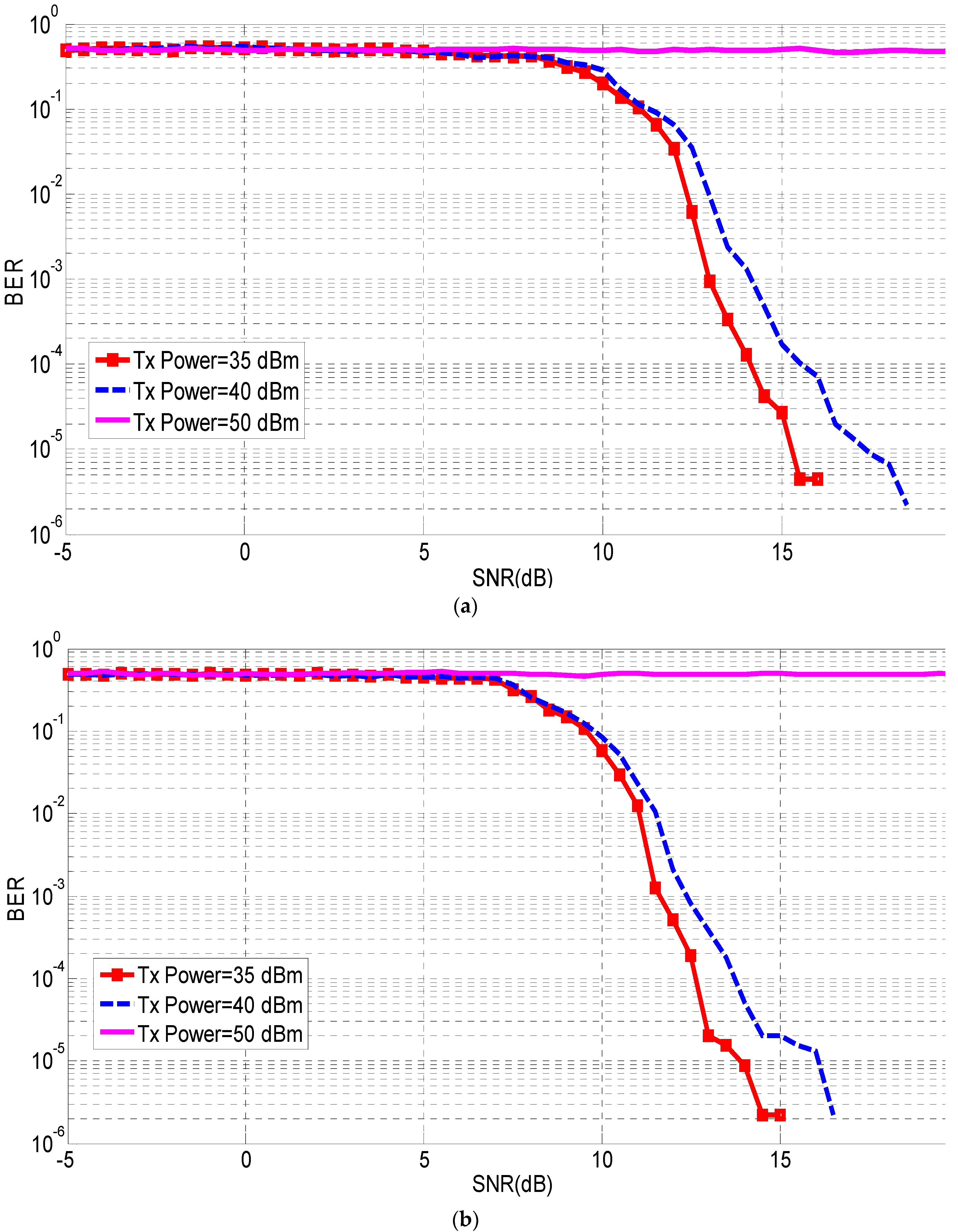
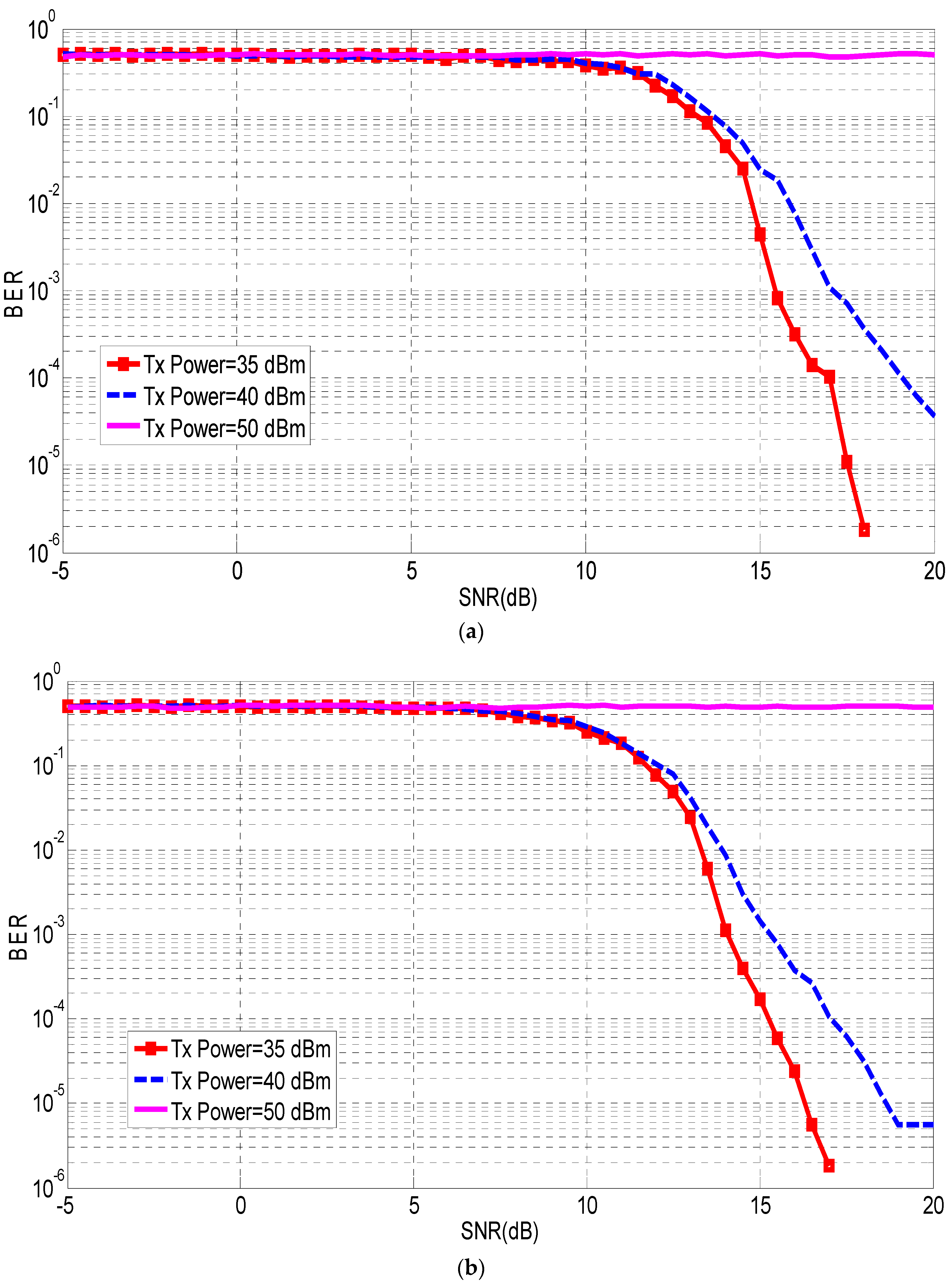
© 2019 by the authors. Licensee MDPI, Basel, Switzerland. This article is an open access article distributed under the terms and conditions of the Creative Commons Attribution (CC BY) license (http://creativecommons.org/licenses/by/4.0/).
Share and Cite
Yahya, M.A.; Alsaif, O.I.; Saleh, I.A.; Abdulkhaleq, A.M.; Ojaroudi Parchin, N.; Al-Yasir, Y.I.A.; Abd-Alhameed, R.A. Noise Cancellation for HIPERLAN/2 with Open Loop Transmit Diversity Technique. Inventions 2019, 4, 46. https://doi.org/10.3390/inventions4030046
Yahya MA, Alsaif OI, Saleh IA, Abdulkhaleq AM, Ojaroudi Parchin N, Al-Yasir YIA, Abd-Alhameed RA. Noise Cancellation for HIPERLAN/2 with Open Loop Transmit Diversity Technique. Inventions. 2019; 4(3):46. https://doi.org/10.3390/inventions4030046
Chicago/Turabian StyleYahya, Maan A., Omar Ibrahim Alsaif, Ibrahim Ahmed Saleh, Ahmed M. Abdulkhaleq, Naser Ojaroudi Parchin, Yasir I. A. Al-Yasir, and Raed A. Abd-Alhameed. 2019. "Noise Cancellation for HIPERLAN/2 with Open Loop Transmit Diversity Technique" Inventions 4, no. 3: 46. https://doi.org/10.3390/inventions4030046
APA StyleYahya, M. A., Alsaif, O. I., Saleh, I. A., Abdulkhaleq, A. M., Ojaroudi Parchin, N., Al-Yasir, Y. I. A., & Abd-Alhameed, R. A. (2019). Noise Cancellation for HIPERLAN/2 with Open Loop Transmit Diversity Technique. Inventions, 4(3), 46. https://doi.org/10.3390/inventions4030046








